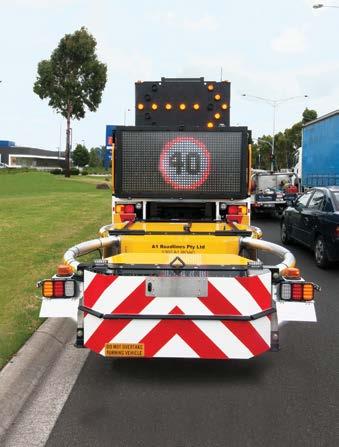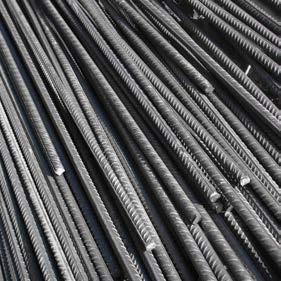
8 minute read
Special Report: Asset Efficiency
3 ways to deliver efficiency across the capital asset project delivery lifecycle

Advertisement
by Geoff Roberts, Director of Energy Industry Strategy, Oracle Construction and Engineering
The utilities sector is dominated by discussions of smart cities and their future needs. For Australia, its long-term prosperity is linked to the performance of our cities, where 80 percent of Australia’s population growth will occur in our five largest cities – Sydney, Melbourne, Brisbane, Perth and Adelaide. With a forecast of an additional 10 million to Australia’s current population by 2043, the needs and requirements of our planet’s megacities is primed to increase exponentially over the next few decades.


With so much focus on changing the way cities operate – from the way energy for homes and businesses is provided and billed, to the new demands on the grid as urban areas become kitted out with increasingly sophisticated and energyhungry technology – the time has come for energy infrastructure, in particular, to react quickly to the new demands being placed on them.
To do this, energy providers need to review their capital assets across the entire portfolio to make sure they’re set up to deliver on the power needs of today, and the future. From empowering employees with better project management, minimising risk during dreaded outage events, and managing decommissioning projects, technology will sit at the heart of any positive change.
POWER TO THE PEOPLE WITH PROJECT MANAGEMENT Project management is often lamented as one of the biggest inhibitors to energy site efficiency. Projects can become weighed down by dozens of key documents, spread across a variety of key stakeholders and disparate divisions.
Technology that can provide full visibility on project data, regardless of location, is critical to working more productively. Gone are the days when IT teams would be forced to manually install software on individual staff members’ computers or laptops – the cloud has given workers access to real-time project information anytime, anywhere.
This also gives energy site operators realtime visibility and control across all grid and pipeline assets, on a single platform, which means workers can deliver quality project schedules, maximise resource capacity and minimise project risks.
SOLVING THE STO DILEMMA Across the energy industry, STO events often are not optimally managed, making them a needlessly high contributor to a site’s non-availability, risk level, and cost. A
typical item list, which traditionally runs at about 3,000 separate items, can quickly escalate into 150,000 individual jobs, or tasks – each with its own stakeholders, compliance requirements, and third-party suppliers.
This implies that the leveraging of technology is critical to effectively support outage management, tracking fundamental activities and deadlines during each phase of the outage via monitoring systems. It also makes it infinitely easier to ensure management buy-in with automated scope capture, challenge, and approval processes. For a utility business, scope is sacred, so they need to ensure they’re mapping any approved changes back to the initial and agreed upon business objectives.
Taking a holistic approach to data management is another way to execute STO events more effectively. A centralised platform for project management means teams from across the organisation can fastidiously track their work in more collaborative manner. For example, possessing the ability to oversee scope across its entire lifecycle — including all estimates, reviews, approvals and any changes to the overall scope regarding resources and schedule — means all stakeholders involved, especially management, can make effective decisions. Having a tighter scope management and a quicker response strategy can benefit overall turnaround success by up to 20–25 percent.
Most crucially, these integrated tools can be applied quickly, with minimal disruption, and start delivering almost immediate gains.
OWN DECOMMISSIONING PROJECTS For Australia’s oil and gas industry, which is nearly 100 years old, it is easy to forget that many of its assets are reaching the end of the lifecycle. Currently it is estimated that the cost of decommissioning Australia’s oil and gas infrastructure is estimated at more than US$21 billion over the next 50 years. Extraordinarily, only around 23 percent of utility companies have a plan in place for
decommissioning their assets. Therefore, it is critical that managers possess visibility and invest into the resource workload to establish effective procedures for decommissioning their assets. Again, centralised data repositories are key – essentially playing the part of an extremely sophisticated knowledge management tool, capturing and storing the information needed for decommissioning.
What’s more, with this real-time access and visibility, risk information can be fed seamlessly into project plans, meaning internal and external stakeholders can look ahead and uncover potential issues before they compromise any decommissioning work. As our cities become smarter – with the rise of electric cars, smart devices and connected hubs – the demand for energy will only increase. As a result, there will be growing pressure on the grid over the coming years which means utility companies that don’t act on the reliability of their site now and start adopting the right technologies, will risk suffering in the near future.





Q U A L I T Y






E Q U I P M E N T
S U P P O R T





S E R V I C E




SHANDYING...








YOU WOULDN’T STAND FOR IT WITH YOUR BEER… SO WHY STAND FOR IT WITH YOUR STEEL?











Are you getting what you ordered? (and what you PAID for?) Does ALL of the steel you’re receiving comply with the right Standards?


The problem of mixed supply (or as it’s more commonly known, ‘shandying’) can have serious consequences – even if you’re specifying construction steels to meet Australian and New Zealand Standards.


Shandying can occur when conforming supply is ordered, but only a portion of the product supplied is sourced from ACRS Certified suppliers (and the rest is sourced from somewhere else). Using non ACRS Certified steel can leave you with non-compliant construction steel... and the risks that come with that.

By providing effective continuous review of both the manufacturer and the fabricator/processor, ACRS 2-stage steel certification scheme and the new ACRS traceability scheme play a major role in reducing the risk of shandying on your project.




Talk to us TODAY about how ACRS Certification gives you confidence in your steel supply.







www.steelcertification.com ACRS - Independent, Expert Third Party Certification & Verification of Reinforcing, Prestressing and Structural Steels for Compliance with Australian and New Zealand Standards Ph: (02) 9965 7216 | E: info@steelcertification.com ABN: 40 096 692 545










